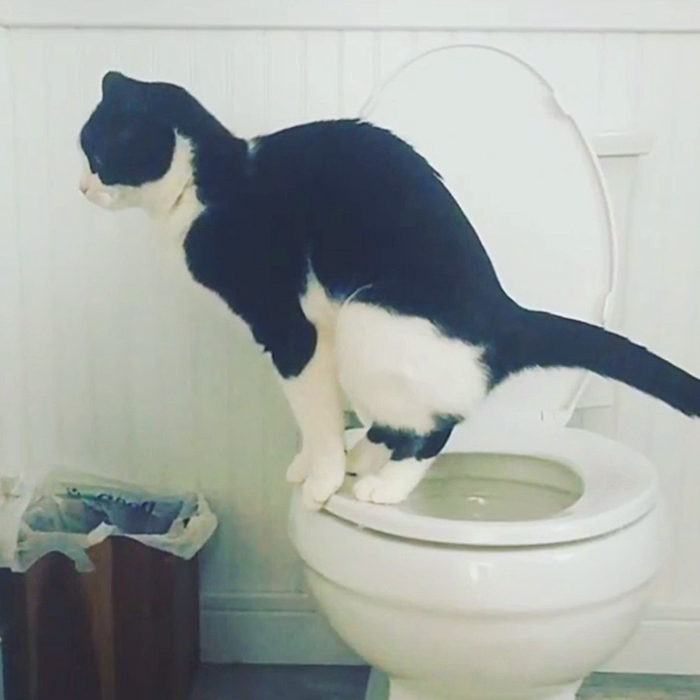Hazards of Flushing Cat Poop Down Your Toilet - Prevent Possible Problems
Hazards of Flushing Cat Poop Down Your Toilet - Prevent Possible Problems
Blog Article
Are you currently interested in insight concerning How to Dispose of Cat Poop and Litter Without Plastic Bags?
:max_bytes(150000):strip_icc()/0S1A1090-49a8e2c66f8e41d6901f2559787a7f24.jpg)
Introduction
As pet cat owners, it's essential to be mindful of just how we take care of our feline buddies' waste. While it might appear hassle-free to flush feline poop down the bathroom, this practice can have harmful effects for both the atmosphere and human health.
Alternatives to Flushing
Luckily, there are more secure and more accountable means to deal with feline poop. Think about the adhering to options:
1. Scoop and Dispose in Trash
One of the most typical method of taking care of feline poop is to scoop it into an eco-friendly bag and toss it in the garbage. Make certain to utilize a committed litter scoop and throw away the waste promptly.
2. Usage Biodegradable Litter
Go with naturally degradable cat litter made from products such as corn or wheat. These clutters are environmentally friendly and can be securely taken care of in the trash.
3. Hide in the Yard
If you have a yard, think about hiding cat waste in a marked area away from veggie yards and water sources. Make certain to dig deep sufficient to stop contamination of groundwater.
4. Set Up a Pet Waste Disposal System
Invest in a family pet garbage disposal system particularly created for pet cat waste. These systems make use of enzymes to break down the waste, lowering smell and environmental influence.
Health Risks
In addition to ecological concerns, purging pet cat waste can also pose health dangers to humans. Pet cat feces may consist of Toxoplasma gondii, a parasite that can trigger toxoplasmosis-- a possibly severe illness, particularly for expecting ladies and people with weakened immune systems.
Ecological Impact
Purging cat poop presents unsafe virus and parasites right into the water system, presenting a substantial risk to water communities. These contaminants can negatively impact marine life and compromise water high quality.
Final thought
Accountable family pet possession expands past giving food and sanctuary-- it likewise involves correct waste monitoring. By avoiding purging cat poop down the commode and choosing different disposal methods, we can decrease our environmental footprint and safeguard human wellness.
Why Can’t I Flush Cat Poop?
It Spreads a Parasite
Cats are frequently infected with a parasite called toxoplasma gondii. The parasite causes an infection called toxoplasmosis. It is usually harmless to cats. The parasite only uses cat poop as a host for its eggs. Otherwise, the cat’s immune system usually keeps the infection at low enough levels to maintain its own health. But it does not stop the develop of eggs. These eggs are tiny and surprisingly tough. They may survive for a year before they begin to grow. But that’s the problem.
Our wastewater system is not designed to deal with toxoplasmosis eggs. Instead, most eggs will flush from your toilet into sewers and wastewater management plants. After the sewage is treated for many other harmful things in it, it is typically released into local rivers, lakes, or oceans. Here, the toxoplasmosis eggs can find new hosts, including starfish, crabs, otters, and many other wildlife. For many, this is a significant risk to their health. Toxoplasmosis can also end up infecting water sources that are important for agriculture, which means our deer, pigs, and sheep can get infected too.
Is There Risk to Humans?
There can be a risk to human life from flushing cat poop down the toilet. If you do so, the parasites from your cat’s poop can end up in shellfish, game animals, or livestock. If this meat is then served raw or undercooked, the people who eat it can get sick.
In fact, according to the CDC, 40 million people in the United States are infected with toxoplasma gondii. They get it from exposure to infected seafood, or from some kind of cat poop contamination, like drinking from a stream that is contaminated or touching anything that has come into contact with cat poop. That includes just cleaning a cat litter box.
Most people who get infected with these parasites will not develop any symptoms. However, for pregnant women or for those with compromised immune systems, the parasite can cause severe health problems.
How to Handle Cat Poop
The best way to handle cat poop is actually to clean the box more often. The eggs that the parasite sheds will not become active until one to five days after the cat poops. That means that if you clean daily, you’re much less likely to come into direct contact with infectious eggs.
That said, always dispose of cat poop in the garbage and not down the toilet. Wash your hands before and after you clean the litter box, and bring the bag of poop right outside to your garbage bins.
https://trenchlesssolutionsusa.com/why-cant-i-flush-cat-poop/

Hopefully you enjoyed reading our section about Don’t flush cat feces down the toilet. Thanks a lot for taking a few minutes to browse our piece of content. Are you aware of anybody else who is interested in the subject? Why not promote it. Thank you for your time. Kindly visit our site back soon.
Get An Estimate Report this page